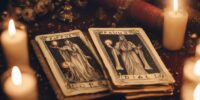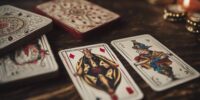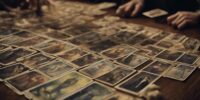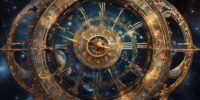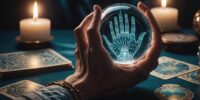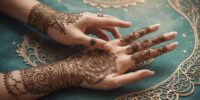Why Tarot Reading Became Popular in the Renaissance Era
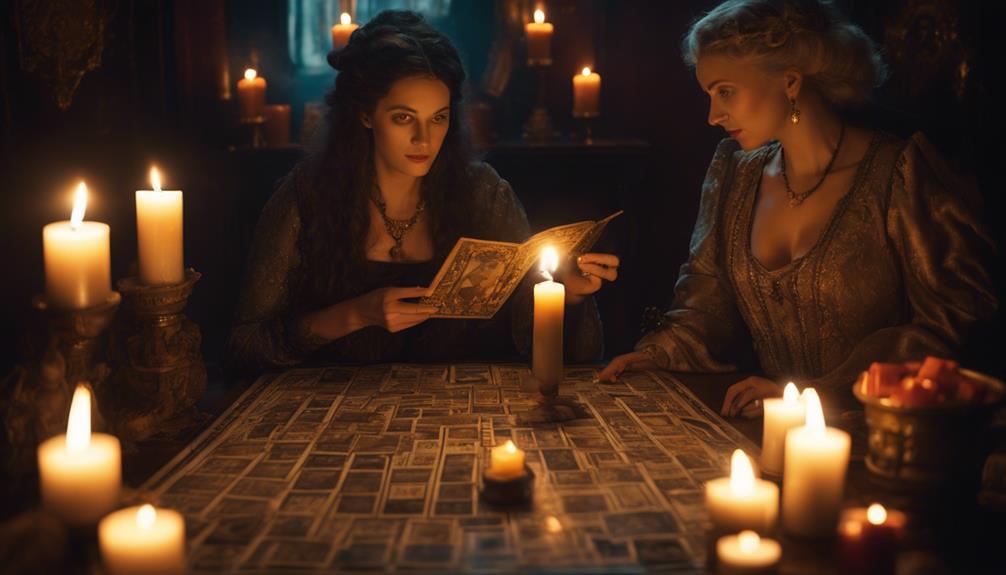
This unique form of divination, with its roots in various European cultures, has evolved over the centuries, remaining a source of fascination and introspection for many. The rich symbolism of the tarot cards allows for personal interpretation, creating a space for introspection and self-discovery.
Throughout history, tarot reading has been embraced by artists, writers, and spiritual seekers, drawn to its profound insights and ability to illuminate hidden truths. The practice continues to thrive in the modern world, with many turning to the tarot for guidance, inspiration, and a deeper understanding of themselves and the world around them.
Cultural Shift Towards Mysticism
During the Renaissance era, a noticeable cultural shift towards mysticism began to captivate the minds of many individuals, drawing them into the intriguing world of esoteric practices such as tarot reading. This mystical revival wasn't merely a passing trend but rather an intellectual revolution that challenged the conventional norms of society. The allure of spiritual exploration beckoned to those seeking a deeper understanding of themselves and the world around them, fueling a societal fascination with the unknown and the mystical.
As the Renaissance unfolded, individuals found themselves questioning traditional beliefs and delving into domains of knowledge that had long been shrouded in mystery. The rise of humanism and the revival of ancient philosophies sparked a thirst for spiritual enlightenment that tarot reading and other mystical practices promised to quench. This shift marked a turning point in history, where the boundaries between the material world and the spiritual domain began to blur, allowing for a new era of freedom and exploration.
Influence of Renaissance Art
The Renaissance era's embrace of mysticism not only reshaped societal perspectives but also left a profound imprint on the domain of art, particularly influencing the masterpieces crafted during this transformative period. Artists of the Renaissance were captivated by the mystical and esoteric, infusing their works with symbolic imagery and deep artistic interpretations. The artworks of renowned masters like Leonardo da Vinci, Michelangelo, and Botticelli, among others, often contained hidden meanings and allegorical representations that mirrored the themes found in tarot cards.
To further illustrate the profound impact of the Renaissance era on art and mysticism, consider the following table that showcases how symbolic imagery was utilized in some iconic Renaissance artworks:
| Artist | Artwork | Symbolic Imagery Used |
|---|---|---|
| Leonardo da Vinci | Vitruvian Man | Representation of the ideal human body and its cosmic connections |
| Michelangelo | The Creation of Adam | Touch of God giving life to Adam, symbolizing divine spark within humanity |
| Botticelli | The Birth of Venus | Allegory of love, beauty, and the divine feminine |
These artists' interpretations and use of symbolic imagery in their works during the Renaissance era helped pave the way for the popularity and understanding of tarot reading in that period.
Role of Noble Patronage
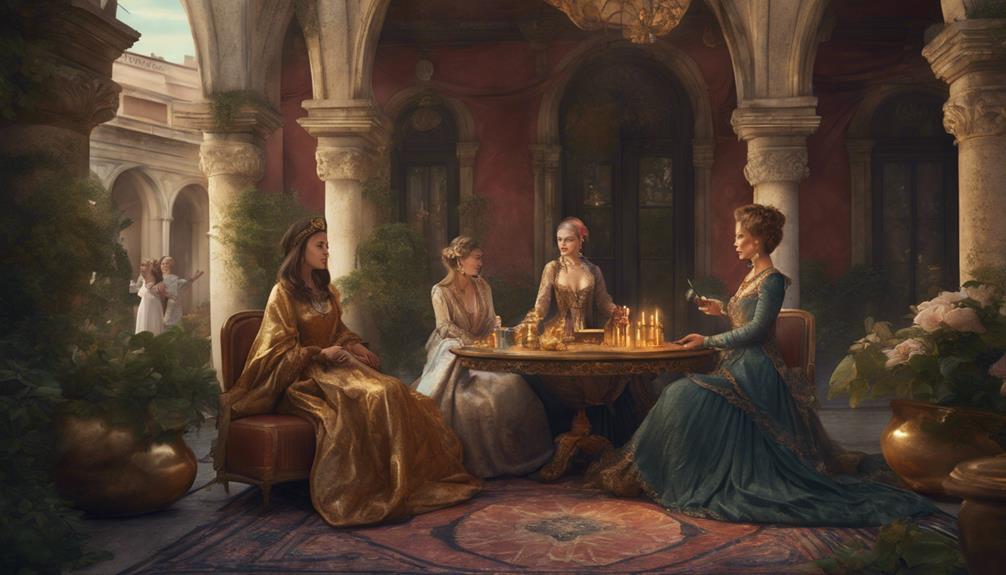
Noble patronage in the Renaissance era played a pivotal role in shaping the artistic landscape and fostering the flourishing of creative endeavors. During this vibrant period, patronage dynamics were important in supporting artists, including those involved in the creation of tarot decks. The aristocratic influence extended beyond mere financial backing; it provided a platform for artistic expression that transcended conventional boundaries.
Aristocratic patrons not only commissioned artworks but also served as catalysts for innovation and experimentation. Their support enabled artists to explore into esoteric themes, such as those found in tarot cards, and encouraged the exploration of symbolism and mysticism. Through their patronage, nobles nurtured an environment where creativity could thrive, allowing for the fusion of art, spirituality, and intellect.
The involvement of noble patrons in the production of tarot decks added a layer of sophistication and depth to these mystical objects. Their discerning tastes and refined sensibilities influenced the artistic choices made by tarot creators, elevating the significance of these cards within the cultural milieu of the Renaissance.
Connection to Alchemy and Astrology
A deep intertwining of symbolism with alchemy and astrology emerges within the intricate tapestry of tarot decks, enriching their esoteric allure and spiritual depth. In the domain of Renaissance mysticism, tarot origins can be traced back to the 15th century when these mystical cards were believed to hold profound insights into the mysteries of the cosmos.
The alchemical connections present in tarot cards mirror the transformative journey of the soul, symbolizing the stages of purification, illumination, and unity. Each card acts as a vessel for universal archetypes, guiding individuals through the alchemical process of self-realization and spiritual evolution.
Additionally, astrological influences play a pivotal role in shaping the symbolism and meaning behind tarot cards. The alignment of celestial bodies at the time of a reading can offer deeper insights into the querent's life path, personality traits, and future possibilities. By blending alchemy and astrology, tarot reading becomes a powerful tool for introspection, guidance, and self-discovery in the pursuit of personal freedom and enlightenment.
Tarot Symbolism and Storytelling
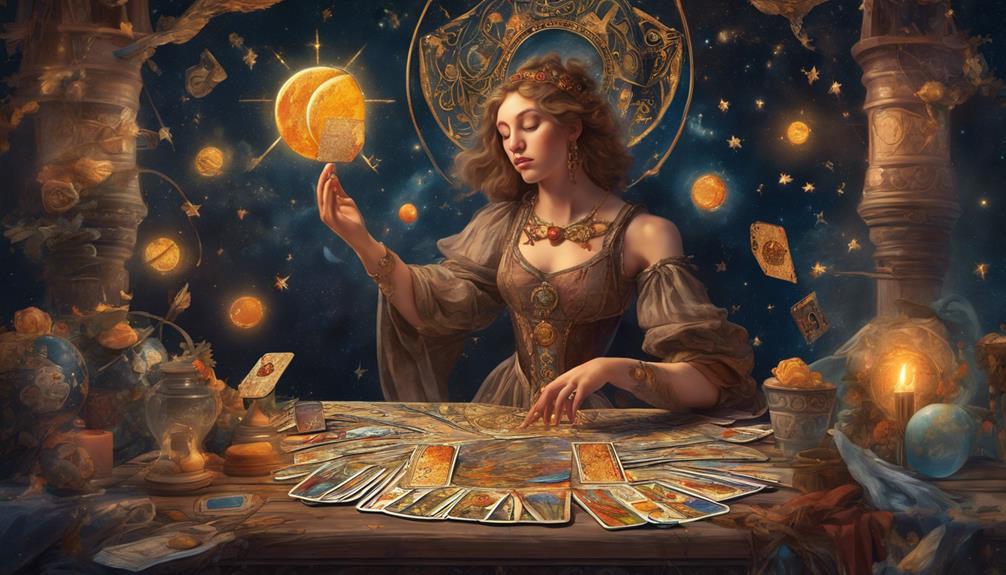
Engaging in tarot reading is akin to unraveling an enthralling tale woven with intricate symbolism and profound storytelling. Each card in a tarot deck carries its own set of symbolic interpretations, contributing to the rich narrative storytelling that unfolds during a reading. The Fool, The Magician, The High Priestess, each character within the tarot deck plays a role in crafting a story that speaks to the subconscious mind and stirs the imagination.
Symbolism is the language of the tarot, with every suit, number, and image holding deep meaning waiting to be deciphered. Through the art of narrative storytelling, tarot readers guide seekers on a journey of self-discovery and reflection, using the cards as a mirror to illuminate hidden truths and insights.
As the cards are laid out in a spread, the reader weaves together a tapestry of symbolism and narrative, opening doors to the psyche and offering glimpses into the mysteries of the past, present, and future. In this mystical practice, the power of symbolic interpretations merges seamlessly with the art of storytelling, creating a space where freedom of thought and exploration reign supreme.
Spread Through Printing Press
The widespread dissemination of tarot reading during the Renaissance era saw a significant boost with the revolutionary invention of the printing press, propelling this mystical practice into the hands of enthusiastic seekers across Europe. Printing technology played a pivotal role in the accessibility and popularity of tarot during this era. The ability to mass-produce tarot decks meant that they were no longer restricted to the aristocracy or the wealthy but became available to a broader audience, including the common people and scholars alike. This democratization of access to tarot decks fueled a surge in interest and practice, leading to a widespread adoption of tarot reading as a tool for divination and self-reflection.
| Advantages of Printing Press in Tarot Dissemination |
|---|
| 1. Mass production of tarot decks |
| 2. Lower costs for tarot decks |
| 3. Increased availability of tarot decks |
| 4. Widened audience for tarot reading |
| 5. Boosted interest and practice of tarot |
Impact of Renaissance Scholars
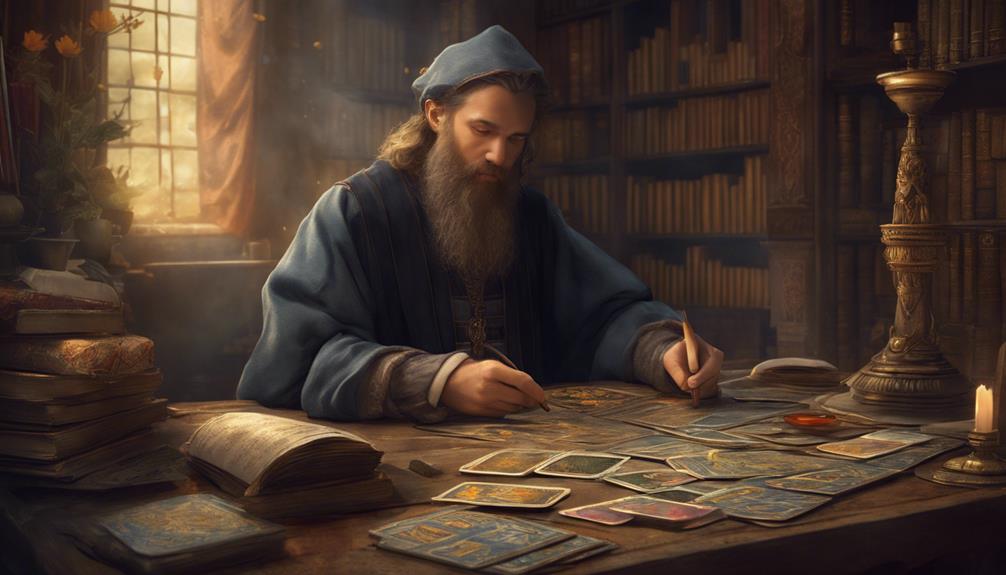
Renaissance Scholars profoundly influenced the interpretation and integration of tarot reading into intellectual discourse through their rigorous analysis and scholarly pursuits. During the Renaissance, a period marked by a revival of art, literature, and learning, tarot cards captured the academic interest of prominent scholars. These scholars explored into the historical context of tarot, seeking to unravel its origins and significance. Through their meticulous study, they developed scholarly interpretations that went beyond mere divination, viewing tarot as a symbolic representation of universal truths.
The impact of Renaissance Scholars extended beyond academia, shaping the broader societal perception of tarot reading. Their efforts elevated tarot from a mere fortune-telling tool to a complex system with profound philosophical implications. By integrating tarot into intellectual discussions and drawing parallels between its symbolism and other disciplines, scholars paved the way for a more nuanced understanding of tarot's role in society. Their contributions continue to resonate in modern tarot reading, emphasizing the enduring legacy of their scholarly endeavors.
Enduring Legacy in Modern Tarot Reading
In the ever-evolving tapestry of human practices, modern Tarot reading stands as a proof of the enduring allure of divination. Its contemporary relevance lies not only in the mystical guidance it offers but also in the introspective journey it facilitates.
The evolution of Tarot from its Renaissance roots to its current forms reflects a timeless pursuit of understanding the human experience.
Modern Tarot Practices
With its enduring legacy deeply rooted in history, modern Tarot practices continue to captivate and inspire seekers worldwide. Tarot therapy, a form of counseling that uses Tarot cards to explore one's emotions and thoughts, has gained popularity for its introspective and therapeutic benefits. Online readings have made Tarot more accessible, allowing individuals to receive guidance and insight from the comfort of their homes.
Modern Tarot practitioners often blend traditional symbolism with contemporary interpretations, offering a fresh perspective while honoring the ancient wisdom embedded in the cards. By embracing technology and evolving interpretations, Tarot maintains its relevance in the modern era as a timeless tool for self-reflection, empowerment, and spiritual growth. The fusion of tradition and innovation ensures that Tarot's importance endures in the modern era.
Tarot's Contemporary Relevance
Modern Tarot's enduring legacy is a confirmation of its timeless significance in guiding individuals towards self-discovery and spiritual growth. Tarot's contemporary relevance lies in its ability to provide psychological interpretation for personal development and intuitive guidance for those seeking spiritual growth. Through the cards, individuals can explore their innermost thoughts and emotions, gaining insights that lead to profound self-discovery. The practice of tarot reading continues to captivate many due to its unique blend of symbolism and interpretation, offering a mirror to the subconscious mind. Below is a table showcasing the interconnected themes of psychological interpretation, personal development, spiritual growth, and intuitive guidance in modern tarot reading:
| Psychological interpretation | Spiritual growth | Personal development | Intuitive guidance |
|---|---|---|---|
| Reveals subconscious patterns | Aids in self-awareness | Promotes self-improvement | Offers intuitive insights |
Evolution of Tarot
The evolution of Tarot unfolds as a tapestry interwoven with ancient wisdom and contemporary insights, embodying a timeless journey of self-discovery and spiritual enlightenment. Originating as a card game in the 15th century, Tarot has metamorphosed into a tool for introspection and divination, transcending its humble beginnings.
The intricate symbolism within Tarot cards speaks a language that resonates with seekers across the ages, offering a mirror to reflect upon one's innermost thoughts and emotions. These archetypal images, rich in history and meaning, continue to captivate modern audiences seeking clarity and guidance.
The enduring legacy of Tarot lies in its ability to bridge the gap between the conscious and subconscious mind, inviting individuals to explore the depths of their souls with curiosity and openness.
Frequently Asked Questions
How Did the Popularity of Tarot Reading in the Renaissance Era Differ Between Different Social Classes?
In the Renaissance, tarot reading's popularity varied among social classes. The elite enjoyed it as a fashionable diversion, while commoners sought guidance and solace. Despite differing motivations, tarot bridged social hierarchies, offering insights to all.
Were There Any Controversies Surrounding the Practice of Tarot Reading During the Renaissance Era?
Controversial practices in tarot reading during the Renaissance era sparked debates on its legitimacy and impact. Tarot symbolism often clashed with prevailing beliefs, leading to skepticism and fear among some circles.
What Were Some Common Misconceptions About Tarot Reading During the Renaissance Era?
Many misconceptions about tarot reading in the Renaissance era stemmed from societal fears and misunderstandings. These myths perpetuated cultural influence and led to social stigma. However, as time passed, the true essence of tarot began to shine through, dispelling these misconceptions.
How Did the Role of Women in Tarot Reading During the Renaissance Era Differ From Men?
Women played a significant role in tarot reading during the Renaissance era, challenging traditional gender roles. They brought intuition and empathy to the practice, offering unique perspectives. Their presence added depth and diversity to the art of divination.
Did the Church Have Any Influence on the Practice of Tarot Reading During the Renaissance Era?
In the domain of Tarot practices during the Renaissance era, the Church held sway, influencing perceptions and acceptance. Despite resistance, the allure of Tarot reading persisted, quietly challenging the boundaries set by religious authority.

